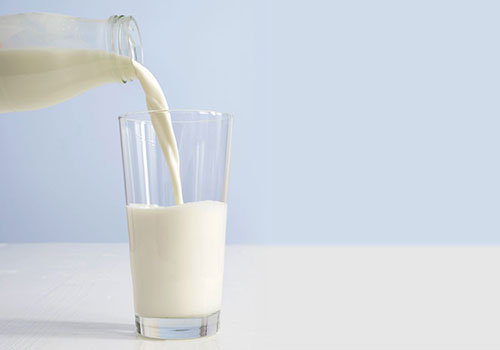
Clients ask me about lactose all the time. A brief survey of facts about lactose had to begin with milk.
Many books and articles exist on the health problems associated with milk. They include breast, prostate and ovarian cancers; allergic reactions in infants; and increased risk of bone fractures, type 1 diabetes, multiple sclerosis, acne, ear infections, and constipation.
Obviously, the health hazards of milk deserve a full discussion of their own.
Monsanto has had a hand in this, but for brevity, this post will address lactose only.
Lactose Intolerance
Lactose intolerance is an inability to digest lactose, the sugar in milk and other dairy products. It”™s caused by a deficiency of lactase, the enzyme necessary for breaking down lactose.
The result will typically be gastrointestinal symptoms and signs, such as bloating, flatulence, diarrhea, nausea and even vomiting.
Lactose intolerance may be genetic, cultural (occurring more frequently in cultures that don”™t rely on dairy products as a food source), and even exposure-related. Those accustomed to consuming dairy products frequently, especially as children, may experience higher tolerance overall.
Age can be a factor, as well. Some clients have noticed GI distresses due to dairy products as they get older.
Rates of lactose intolerance may range from 5% in northern European countries to as much as 90% in African and Asian countries, where milk and other dairy products are not consumed.
Some anti-dairy articles recommend milk products for Scandinavians only — and not even all Scandinavians, just blond-haired ones.
Is Lactose Hiding In Your Food?
Unexpected foods may contain lactose. A client who was working hard to get away from sugar had planned to try stevia, but reported to me that she couldn”™t use it because she was lactose intolerant.
That made no sense until the next time I visited Trader Joe”™s, which is where the client had gone for her groceries. Trader Joe”™s carries 2 types of stevia. One is in a small plastic bottle that contains 100% pure stevia. The other is in a much larger bottle and contains stevia plus lactose as a sweetener.
Now, I just don”™t get adding sweeteners to sweeteners, but I”™m the die-hard Sugar Patrol, so don”™t ask me. People even add sweeteners to fruit — frozen, canned, dried, baked — another thing I don”™t get. But I digress.
At any rate, there”™s more to be said about stevia, since some people may have a sugar reaction to it. That can include, but is not limited to, later cravings for sugary foods. But let”™s save the stevia discussion for yet another post.
Bottom line, lactose is an added sweetener used in certain foods. Read all labels.
When Clients Quit Sugar, What Happens?
This brings us to Lactose as Sugar.
As a sugar addiction expert, I”™ve seen a common pattern in client food logs. Someone who”™s in the process of kicking sugar might start eating more milk products — cheese, yogurt, cottage cheese, and so on.
It”™s worth noting and stopping if you”™re serious about quitting sugar.
As mentioned above, the negative heath consequences of dairy products are many. Whether you”™re lactose intolerant or not, subbing lactose for the sugars you”™re trying to quit can and will be counterproductive. Lactose can have the same effect as any other sugar on someone who is sugar-sensitive.
If you”™re quitting sugar, quit lactose, too. Your vigilance will reward you.
- New Year’s Resolutions: A Sugar Addict’s Survival Guide - April 15, 2024
- Motivation vs. Enthusiasm - October 12, 2023
- Why Exercise Shouldn’t Be Just One Thing - November 9, 2022
